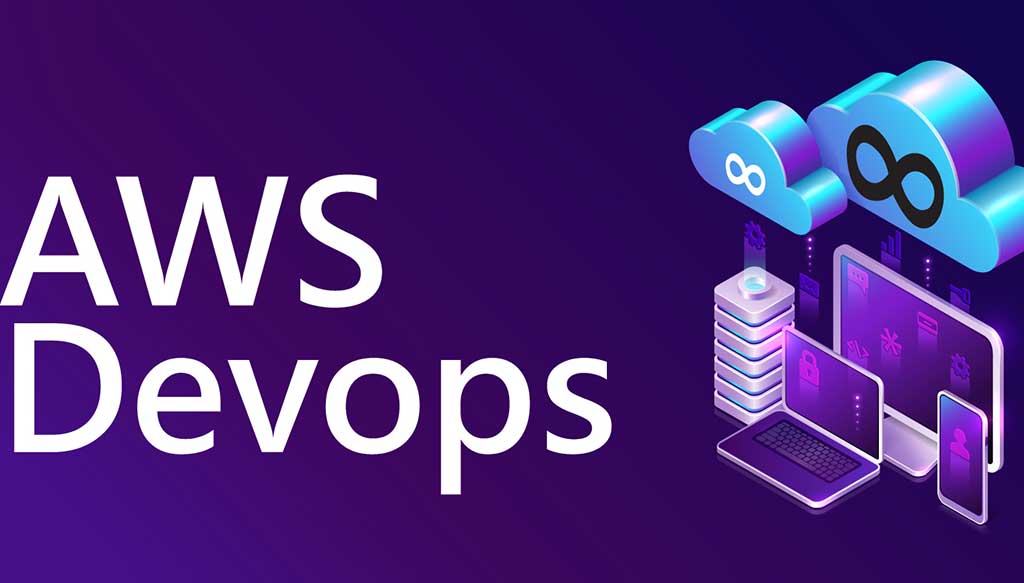

Ram trainings is an excellent resource for expanding your knowledge and developing innovative skill sets that will assist you in passing your certification exam on the first try. We value respect, integrity, honesty, diversity, tolerance, and quality, as well as compassion for students and professionals seeking a new career path. For more details, please contact us at:

DevOps, which is a mix of "development" and "operations," is a collection of practices for software design. Because it is a simple process, there are several variations to select from. As cloud computing has grown in popularity, consumers now have a choice of over a dozen distinct cloud providers, including Google Cloud, Microsoft Azure, and IBM Cloud Services. AWS stands for Amazon Web Services, Amazon's cloud service. AWS DevOps is Amazon's solution for adopting the DevOps concept through the use of its cloud platform and specific tools and services. AWS DevOps enables application development teams to quickly adopt continuous integration and delivery. This allows them to securely save and version application source code while automatically developing, testing, and deploying the application to on-premises or AWS environments.
In comparison to development teams, the DevOps team is needed to generate and deliver cloud instances and services more often. AWS resource templates, such as EC2 instances, ECS containers, and S3 storage buckets, allow you to build up the full stack without having to connect everything. You will have responsibilities as an AWS DevOps Engineer expert in an organisation. You must deploy, automate, administer, and maintain the AWS cloud-based system to assure its performance, scalability, availability, and security. You must also handle the systems' construction, deployment, and configuration. To be an AWS engineer, take up the AWS DevOps certification course from RAM training and get a better learning path to advance in your career. The DevOps engineer course teaches you the fundamentals of continuous integration/continuous delivery, automated configuration management, inter-team communication, and IT service agility. The course employs well-known DevOps tools such as Ansible, Cucumber, Docker, Git, Jenkins, Nagios, and TeamCity. One of the most important responsibilities of a DevOps specialist is to automate particular processes. This AWS service enables businesses to automate a variety of manual operations such as deployment and testing. Furthermore, AWS Management Console and AWS Command Line Interface (CLI) aid in the management and automation of multiple activities, as well as the provision of reports on the achievement of the desired outcomes.
Consider upskilling if you're currently working in DevOps with our AWS DevOps training program. The more talents you have under your belt, the more valuable you are to your present or prospective employer. The aws devops certification programme can help you prepare for a future in DevOps, a rapidly emerging sector that connects software engineers and operations. The DevOps course includes over 55 hours of Blended Learning, two dozen live demos of prominent DevOps technologies, more than ten industrial projects, 24/7 support, and lifelong access to self-paced learning materials.
Ram trainings is a well-known resource for providing AWS DevOps live training. We have a proven track record of training enthusiasts and professionals according to their requirements and convenience.
Ram trainings is a reliable source that readily welcomes you to provide AWS DevOps job placements in the USA by understanding your job requirements. We help you to become a confident candidate and acquire excellent job placement. Our touch will distinguish your profile from others, allowing you to gain credibility with hiring managers and recruiters in a short time.
Ram Training is the best destination for employees and freshers seeking a reliable resource to achieve a long-lasting career in the field. We offer 100% live AWS DevOps training with experts.
Yes. Candidates seeking a rewarding career in the field can benefit from our AWS DevOps placement assistance. Through our unwavering commitment to high-end research and quality, we have earned the trust of candidates over the years.
Testimonial 1
I had AWS DevOps training from Ram trainings. They assisted me from the first call until the offer letter was received very professionally, responded to every single query, and were available whenever I reached out to them. Thank you very much, highly appreciated!